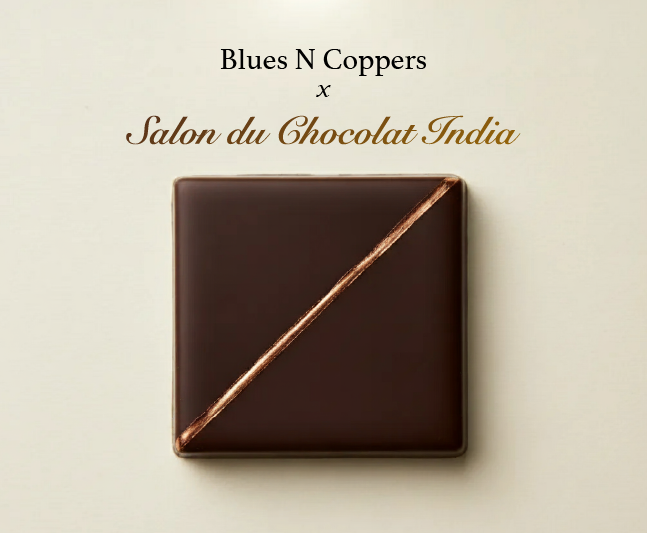Rule of 7 – Marketers’ Secret Weapon for Exhibition Success
Exhibitions are crowded, competitive, and full of distractions. Brands invest their time and money into booths, graphics, and live experiences, yet many still leave wondering why their leads went cold. The rule of 7, a time-tested marketing principle with roots in early Hollywood promotions, offers an answer. Decades ago, studio marketers learned that audiences needed to encounter a message several times before deciding to buy a ticket; the same psychology now applies to modern events.
At Blues N Coppers, we design exhibition journeys so every visitor interacts with your brand multiple times—before, during, and after an event. In the following sections, we’ll explore what the rule of 7 means today, why it matters in the exhibition arena, and how you can apply it for measurable results.
What Is the Rule of 7?
The rule of 7 is a well-established rule of marketing that says prospects need to interact with a brand at least seven times before deciding to act. As we noted earlier, this principle has stood the test of time, but its relevance has only grown as buyer journeys become more fragmented and self-directed.
According to Gartner, modern go-to-market strategies must plan for repeated, consistent messaging across every stage of the funnel. Exhibitions are one of the few places where you can design these touchpoints end-to-end. A single event can combine:
- Digital interactions: Pre-event emails, personalised invitations, social media teasers and ads.
- Physical cues: Booth displays, signage, branded giveaways, and on-site graphics.
- Experiential moments: Live demos, workshops, and networking sessions.
Each exposure reinforces your story, builds familiarity, and reduces decision-making risk. When these seven (or more) touchpoints are designed as part of a coherent strategy, they reinforce each other and create a seamless experience for attendees. This mirrors the digital-first, buyer-led approach Gartner highlights for the future of sales and helps visitors perceive your brand as credible, memorable, and worth following up with after the show.
Why the Rule of Seven Matters in Exhibitions
At a major trade show or expo, a typical visitor may pass more than 100 booths in a single day and be exposed to thousands of messages across banners, screens, and handouts. In this noise, even the most visually striking stand can fade into the background. The marketing rule of 7 gives exhibitors a framework to rise above that clutter by planning repeated, meaningful encounters across the event cycle. Here’s how it works in practice:
- Builds familiarity: Consistent exposure trains the brain to recognise and remember a brand. Neuromarketing research shows that repetition strengthens memory pathways, so prospects who see your visuals and messages several times are far more likely to recall them when making a decision later.
- Drives trust: In crowded spaces, trust becomes a differentiator. Exhibitors who reinforce their key messages across pre-event emails, booth graphics, and live demos appear more credible. Research shows that 81% of consumers need to trust a brand before they will even consider buying from it, and 50% are more likely to buy from brands they recognise. This makes consistent, repeated messaging at exhibitions a driver of conversions.
- Maximises ROI: Exhibitions often represent one of the largest line items in a marketing budget. Creating at least seven touchpoints—from pre-event teasers to post-event follow-ups—helps you extract more value from every lead captured. In fact, companies using a multichannel approach see conversion rates up to 287% higher than those relying on a single channel. This shows how the rule of seven, applied across channels, directly boosts the return on exhibition spend.
- Matches buyer behaviour: Modern buyers don’t make decisions instantly; they research, compare, and seek reassurance before committing. In fact, 91% of B2B buyers come to sales meetings already familiar with the vendor and 97% research vendors before engaging with them. Repeated cues across channels mirror this behaviour, gradually moving prospects from awareness to intent.
Pre-event promotions prime the audience, booth design reinforces the message during the show, and timely post-event follow-ups seal the relationship. This is the rule of marketing at work. Turning exhibition spend into a sustained pipeline rather than a one-off event.
How to Apply the Rule of 7 in Exhibition Marketing
Applying the rule of 7 in marketing means creating a structured journey of repeated, meaningful interactions across the exhibition lifecycle. To make this principle actionable, it helps to break the exhibition journey into three phases—pre-event, during the event, and post-event—so each interaction reinforces your message and moves prospects closer to a decision.
A well-planned exhibition journey leverages the rule of 7 through repeated touchpoints before, during, and after the event. Here’s how to make each phase count:
Pre-Event
- Targeted email campaigns (invites + reminders): Personalised emails keep your brand top of mind and encourage early registration, giving prospects multiple opportunities to engage.
- Social media teasers and countdown posts: Short, visually appealing posts build anticipation and generate awareness among attendees who may not yet be familiar with your brand.
- Personalised invites to key prospects: Direct outreach makes high-value targets feel valued, increasing the likelihood they will visit your booth.
During Event
- Creative booth design that visually reinforces your brand: Consistent colours, messaging, and layout help visitors instantly recognise your brand, even in a crowded hall.
- Repeated engagement points—demos, presentations, interactive walls: Hands-on experiences make your offering memorable and encourage attendees to spend more time at your booth.
- Branded merchandise that travels home with visitors: Useful takeaways extend your brand presence beyond the event and create additional touchpoints at the prospect’s workspace.
Post-Event
- Thank-you emails and follow-up calls: Immediate follow-ups show professionalism and keep your brand fresh in attendees’ minds.
- Digital brochures and content re-shares: Sharing detailed materials digitally reinforces key messages and provides reference points for decision-making.
- Event highlight videos to re-engage attendees: Videos summarising the event experience extend the storytelling and encourage further interaction.
Example: A Blues N Coppers strategist shared how a tech client applied consistent visual cues and AR demos across all touchpoints. Leads warmed up during pre-event teasers, engaged deeply at the booth, and converted after personalised follow-ups. While this 40% uplift is based on internal observation rather than a published study, it highlights the potential impact of a disciplined marketing rule approach.
Key Considerations When Using the Rule of 7
While repetition is a powerful tool, not all touchpoints are created equal. In applying the rule of 7 in marketing, the quality, relevance, and consistency of each interaction matter just as much as the number of exposures. Here’s what to keep in mind:
- Consistency: Branding should look, feel, and sound the same across all touchpoints—emails, booth visuals, demos, and post-event content. Consistent design and messaging make your brand instantly recognisable.
- Quality over quantity: Simply reaching prospects seven times is not enough. Each interaction must provide value—whether it’s useful information, an engaging demo, or a memorable experience.
- Cultural sensitivity: Ensure that messaging, visuals, and promotions align with the local context and audience preferences. Misaligned content can reduce engagement or even create negative perceptions.
- Integrated strategy: The most effective approach combines digital, physical, and experiential marketing. Pre-event emails, on-site booth engagement, and post-event follow-ups should work together to reinforce the same core messages.
By paying attention to these considerations, marketers can make each of their seven interactions meaningful, memorable, and more likely to drive action.
Common Mistakes to Avoid with the Rule of 7
Even a powerful principle like the rule of 7 can backfire if applied without strategy. Overusing it can create clutter, fatigue, and confusion rather than building brand recall. Here are common mistakes to watch for:
- Overloading visitors with forced repetition: Bombarding attendees with the same visuals or messages too often can feel pushy and reduce engagement.
- Inconsistent design language across channels: Different colours, fonts, or messaging across emails, booths, and social posts can confuse visitors.
- Ignoring post-event engagement: The last touchpoint matters—skipping follow-ups wastes the effort invested in pre-event and during-event interactions.
- Failing to track leads through all touchpoints: Without tracking, it’s impossible to measure which interactions worked, and opportunities may be missed for nurturing prospects effectively.
By avoiding these pitfalls, marketers can use the rule of marketing to amplify impact rather than dilute it.
Turning the Rule of 7 into Exhibition Success
Exhibitions naturally amplify the rule of 7 in marketing because of their immersive nature. With Blues N Coppers’ expertise in booth design, experience curation, and creative event services, marketers can transform this principle into measurable success.
Ready to create a memorable, multi-touchpoint exhibition experience? Explore our services and see how the marketing rule of 7 can work for your next event.
FAQs on Rule of 7
1. How does the rule of seven work in exhibitions?
- Visitors need to encounter your brand multiple times—before, during, and after the event—to remember and trust it.
2. Why is the marketing rule of 7 important for brand success?
- It cuts through exhibition noise, building familiarity and trust that lead to higher conversions.
3. How can companies apply the rule of 7 in marketing effectively at events?
- Plan seven meaningful interactions across the event lifecycle: emails, booth, demos, and follow-ups.
4. Is the marketing rule of 7 still relevant in today’s digital world?
- Yes. Digital channels add even more touchpoints, making repetition easier and more trackable.
5. What are examples of the rule of 7 in exhibition marketing?
- Pre-event teasers, booth demos, branded merchandise, post-event thank-you emails, and highlight videos.
6. Can the rule of 7 in marketing help improve exhibition ROI?
- Absolutely. Consistent, repeated touchpoints raise lead quality and conversion rates.

.svg)




